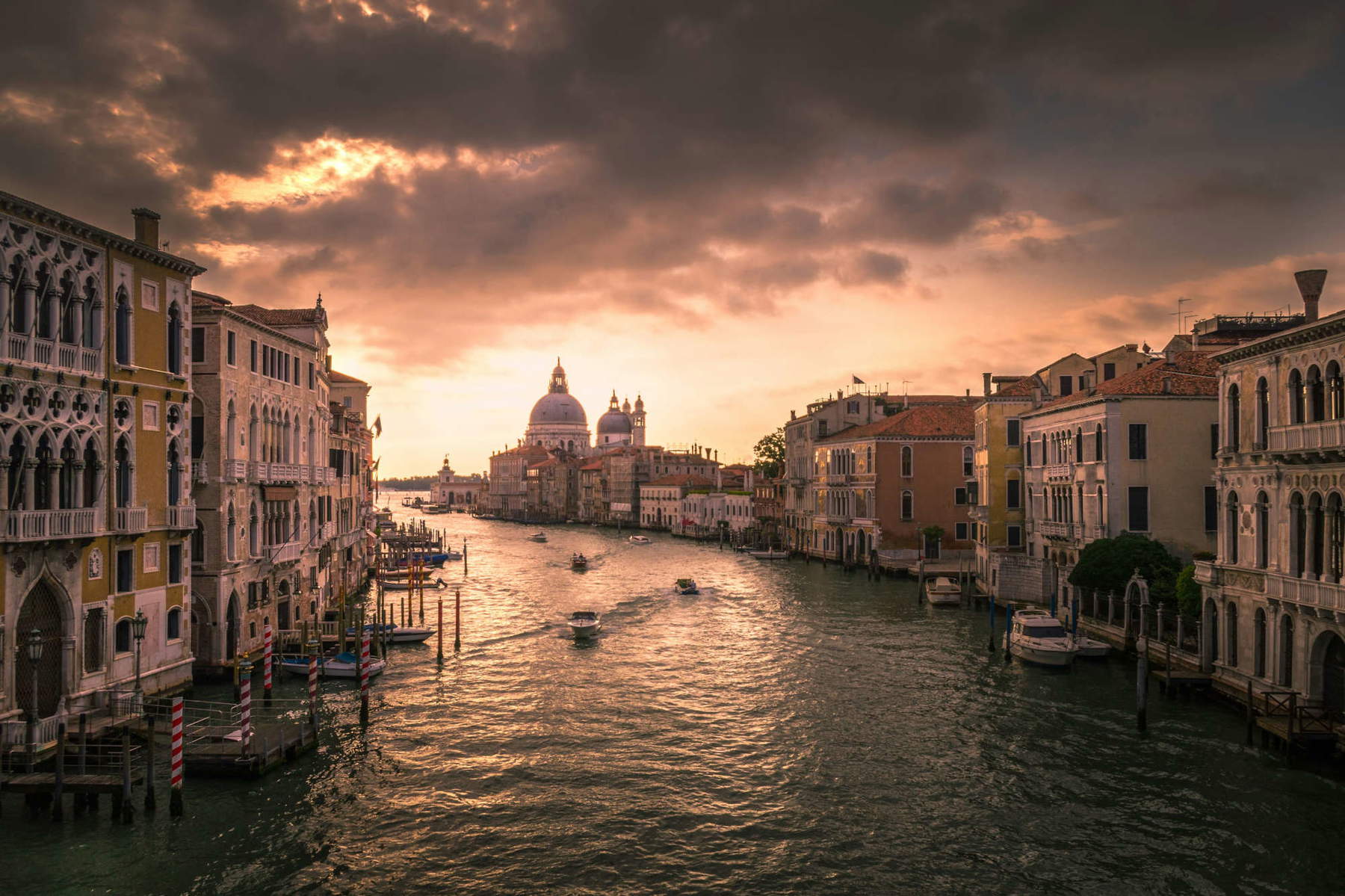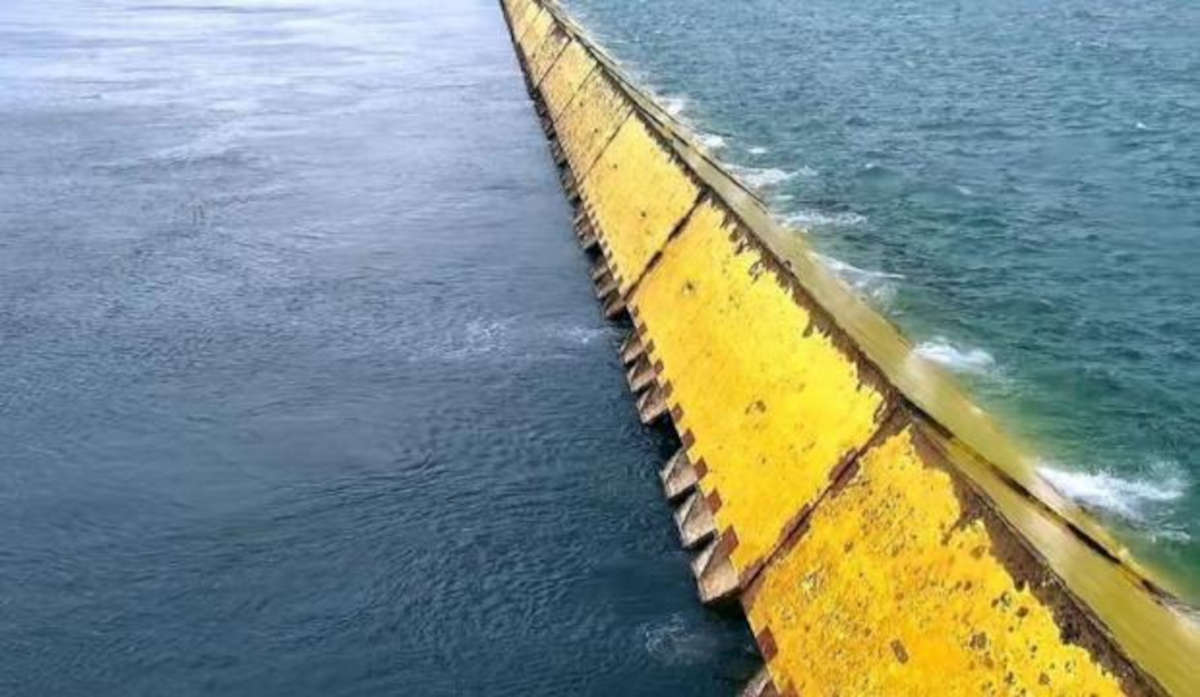Venice is in danger of being largely submerged by 2150. INGV's shock study
Venice and its lagoon could face a future marked by extreme flooding if urgent measures are not taken to counter sea level rise and continued soil subsidence. This is the alarm raised by researchers from theNational Institute of Geophysics and Volcanology (INGV) who, together with Italian and international entities, have conducted an in-depth analysis of the future of the Venetian capital. The study, titled Multi-Temporal Relative Sea Level Rise Scenarios up to 2150 for the Venice Lagoon (Italy), was recently published in the scientific journal Remote Sensing and offered a dramatic projection for the lagoon city, one of the most iconic places in the world, for which sea level rise and land subsidence are increasingly real threats.
The work is based on the most up-to-date climate projections provided by theIntergovernmental Panel on Climate Change (IPCC) and integrates advanced geodetic data, including those from Global Navigation Satellite System (GNSS) stations and Synthetic Aperture Radar (SAR) satellite radar. These instruments, together with time series collected from tide gauges and high-resolution topographic data, allow more accurate future scenarios to be plotted regarding sea level evolution in the lagoon. These data are then combined with climate models that consider various greenhouse gas emission scenarios, including RCP2.6, which represents a scenario with low emissions and effective mitigation, RCP4.5, which predicts an intermediate level of emissions, and RCP8.5, which corresponds to a future with high emissions without mitigation.

“To estimate the effects of sea level rise in the Venice Lagoon by 2150,” explain Marco Anzidei and Cristiano Tolomei, INGV researchers, “the study adopted a multidisciplinary approach based on different types of data, including geodetic data from Global Navigation Satellite System station networks, known as GNSS, Synthetic Aperture Radar - SAR satellite data (which together with GNSS stations allows the measurement of ground motions with millimeter accuracy) the sea level time series collected by the tide gauge network from the Istituto Superiore per la Protezione e la Ricerca Ambientale (ISPRA) and the Tide Forecasting and Reporting Center of the City of Venice, and the high-resolution topographic data made available by CO.RI.LA and the Ministry of Environment and Energy Security (MASE).”
The objective of this study was to provide a clear picture regarding the next evolution of sea rise, analyzing the impact this phenomenology will have on the coasts and islands of the Venetian lagoon in the coming decades. The research projectedflooding scenarios for three key dates: 2050, 2100 and 2150, taking into consideration the absence of protective interventions such as those provided by the MoSE (Modulo Sperimentale Elettromeccanico) system, designed to defend Venice from high waters.
According to the results of the study, in the worst case scenario, the sea level could rise up to 3.47 meters above the reference level of the Punta della Salute tide station, one of the main tide monitoring stations in Venice. This scenario is similar to what has occurred before on extraordinary occasions, such as in 1966 and 2019, events that saw the city under water for days at a time. According to the study, sea levels in the Venice Lagoon have been rising at an average rate of about 2.5 mm per year during the 20th century. However, this rate has increased in recent decades, and when local subsidence is also considered, the relative sea level could rise well above the global average. According to projections, under the most optimistic assumption of strong emission reduction efforts, the rise could be about 35 cm by 2100 and 55 cm by 2150. If emissions follow an intermediate path, sea levels could rise about 50 cm by 2100 and 80 cm by 2150. In the worst case, without mitigation, the rise could reach 75 cm by 2100 and exceed 120 cm by 2150. If the effect of subsidence is added to these estimates, the relative sea level could rise up to 140-150 cm in the long run.

“The potentially submerged territory by 2150 would also reach 139 km², with an extension that could reach 226 km² (or 64 percent of the investigated area) in case of these exceptional high waters,” explain Tommaso Alberti and Daniele Trippanera, INGV researchers. “The data show that without further specific interventions Venice will be more exposed to flooding phenomena, with a significant impact on the population and historical heritage.”
The research also highlights how land subsidence, the phenomenon of soil subsidence that has affected Venice for centuries, continues to exacerbate the situation. Currently, the rate of subsidence reaches 7 mm per year, a phenomenon that, together with rising sea levels, threatens to seriously compromise the stability of the city and its infrastructure. The lower areas of the lagoon are particularly vulnerable, increasing the risk of flooding in an area that is already among the most environmentally and culturally sensitive on the planet.
The combination of sea level rise and land subsidence is accelerating the flooding process, affecting not only the city’s physical geography but also its population and historical heritage. The historic structures and monuments that make Venice unique in the world are at risk, and this could have a devastating impact on tourism, one of the city’s main economic resources. Coastal areas and infrastructure critical to transportation and daily life in the city could suffer irreparable damage if timely measures are not taken.
The impact of these scenarios on the Venice Lagoon would be significant. Rising sea levels would result in more frequent and intense exceptional tides, increasing the risk of flooding and making water management in the city increasingly difficult. The MOSE system, currently designed to protect the lagoon from tides up to about 110-120 cm, may prove insufficient in the long run, requiring further improvements or implementation of new solutions. Protection of the city’s historic infrastructure and buildings may need structural interventions, such as raising foundations and adopting water-resistant materials.
The INGV study, which was funded by the Ministry of University and Research under the PRIN - GAIA project, provides an important scientific basis for designing adaptation and protection strategies for Venice. The city, one of the most visited and appreciated places in the world for its uniqueness, cannot afford to ignore the urgency of action. The evolution of climate phenomena demands immediate reflection: only through an integrated and sustainable approach will it be possible to preserve Venice and its lagoon for future generations.
“The scenarios outlined suggest that updates to spatial planning and risk plans need to be undertaken as soon as possible by policymakers and local authorities, with concrete actions to protect Venice and its lagoon. Only through responsible and conscious management will it be possible to preserve the city, its population and a unique cultural heritage from the consequences of the sea level rise expected in the coming decades,” Marco Anzidei concludes.
 |
| Venice is in danger of being largely submerged by 2150. INGV's shock study |
Warning: the translation into English of the original Italian article was created using automatic tools. We undertake to review all articles, but we do not guarantee the total absence of inaccuracies in the translation due to the program. You can find the original by clicking on the ITA button. If you find any mistake,please contact us.





























